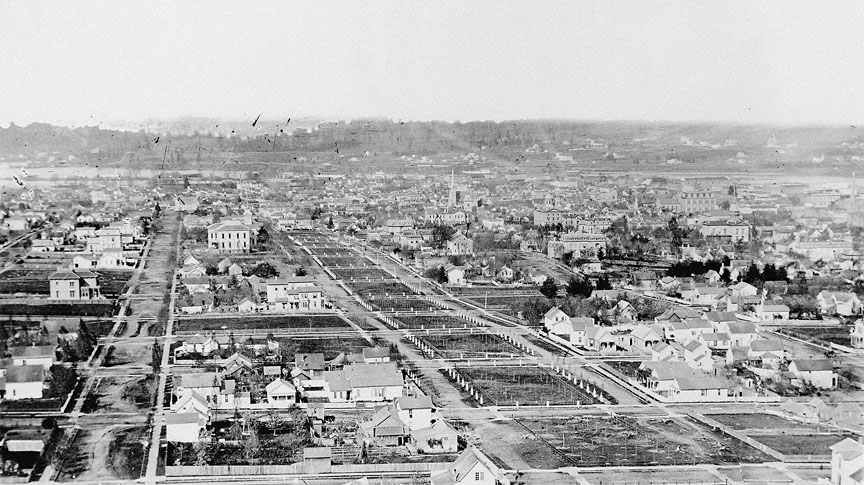- Catalog No. —
- OrHi 23454
- Date —
- 1878
- Era —
- None
- Themes —
- Geography and Places
- Credits —
- Oregon Historical Society
- Regions —
- Portland Metropolitan
- Author —
- Unknown
Park Blocks, 1878
The Park Blocks were set aside by early landowner Daniel Lownsdale in an 1849 survey. The narrow strip of blocks running north and south were substantially west of the city center at the time, but Lownsdale correctly predicted that the city would grow to encompass the park. This 1878 photo shows a remarkable amount of remaining undeveloped land, and the Park blocks still lay somewhat west of the central commercial district.
Lownsdale was not solely responsible for Portland’s first public green space. Two sections of the blocks were in private hands, but were eventually sold to the city. Captain John H. Couch also set aside and donated an adjoining strip of blocks when he platted his claim just to the north. However, Benjamin Stark did not contribute the two-block section he owned. Instead, Stark demanded an outrageous $138,000 for the two blocks, which the city refused to pay. Consequently there was a gap between the Lownsdale and Couch sections. In addition to that gap the land owned by Nancy Lownsdale, Daniel’s wife, had fallen into private hands when she died without a will. The price asked by her heirs was too high for the city, and officials instead chose to buy a little over forty acres for City Park, later called Washington Park.
The remaining Park Blocks fostered a central housing district with many gracious homes in the 1880s and 1890s. As it expanded, Portland State University began to replace some housing in the South Park Blocks. The future of the Park Blocks continues to be a topic of lively discussion.
Written by Trudy Flores, Sarah Griffith, © Oregon Historical Society, 2002.
